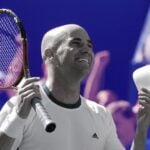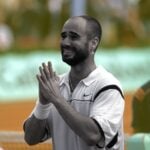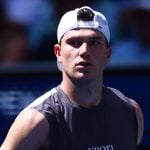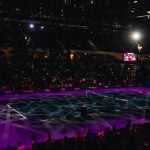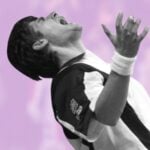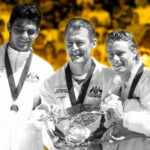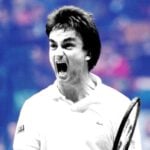August 16, 1994: The day Andre Agassi tried to stop the music
Every day, Tennis Majors takes you back in time to relive a tennis event which happened on this specific day. On this day in 1994, Andre Agassi blasted tournament officials in New Haven after they introduced music during changeovers
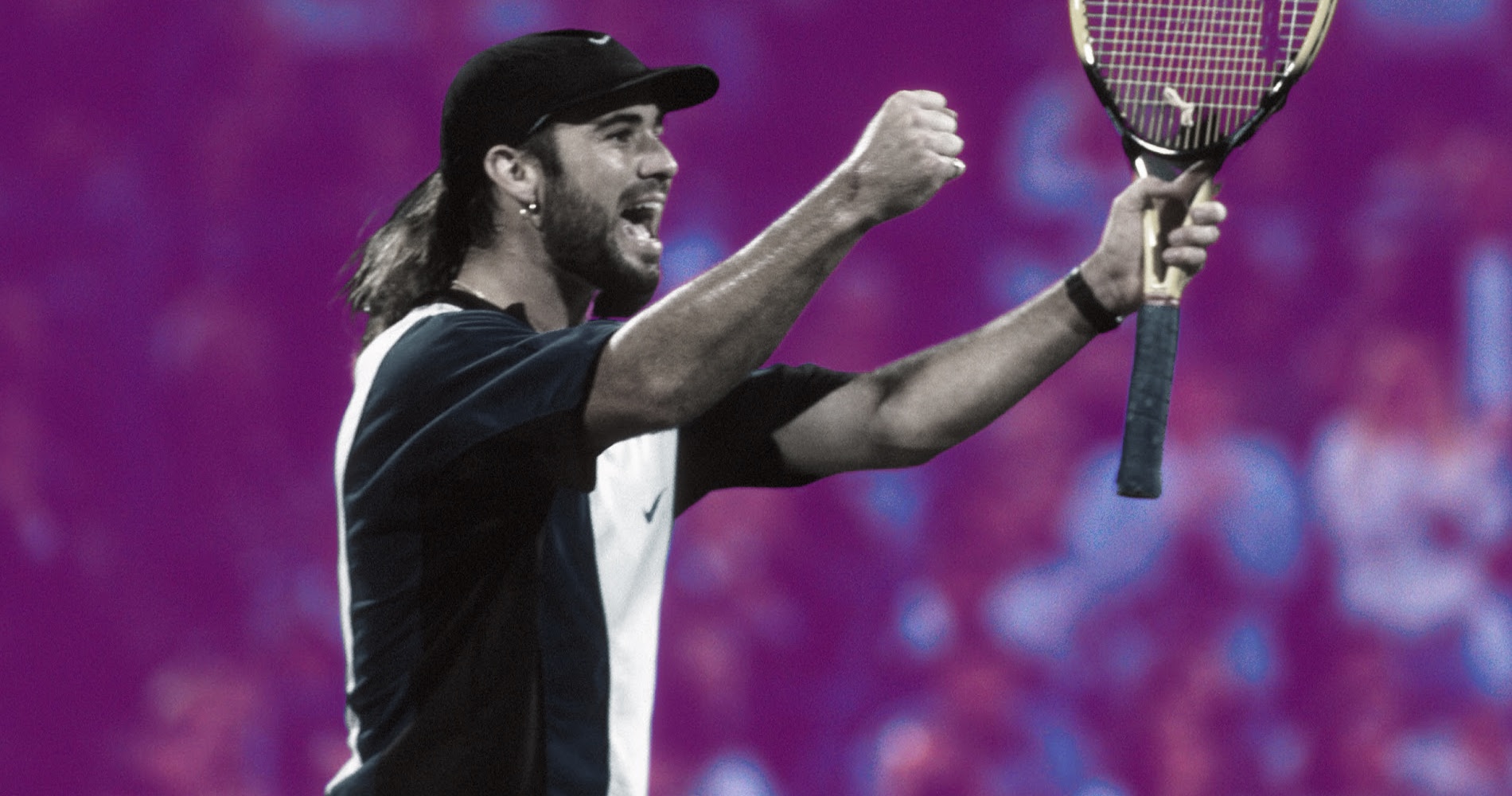 Andre Agassi
Andre Agassi
What happened exactly on that day?
On this day, August 16 in 1994, Andre Agassi had a meltdown during his first-round match in New Haven, as the organisers of the tournament had decided to experiment with in-stadium music at changeovers. After complaining to the umpire and losing to world No 113 Jan Siemerink (6-3, 3-6, 6-3), Agassi flew off the handle during his press conference.
The players: Andre Agassi and Jan Siemerink
- Andre Agassi: the Las Vegas Kid who turned into a Grand Slam winner
Andre Agassi, the Las Vegas Kid, was one of the biggest stars in the sport. He turned professional in 1986 and soon became famous, not only thanks to his amazing tennis skills but also his flamboyant fashion choices, including the iconic denim shorts and pink bike shorts (worn as an underlayer). Taught by his father and bred at the Nick Bollettieri Academy, Agassi’s game relied on a phenomenal return (the best of its time) and on taking the ball on the rise off both flanks with incredible power. Agassi’s game style was considered revolutionary at the time and would soon be copied by generations of upcoming tennis players.
Agassi won his first ATP tournament in November 1987, in Itaparica, defeating Luiz Mattar in the final (7-6, 6-2). 1988 was his breakthrough year: not only did he claim six titles, but he also reached the semi-final at Roland-Garros, defeated by Mats Wilander (4-6, 6-2, 7-5, 5-7, 6-0), and at the US Open, where he lost to Ivan Lendl (4-6, 6-2, 6-3, 6-4). In the French Open semi-final, he made himself famous by borrowing an umbrella from a first-row spectator and pretending to prepare for the next point as he held it aloft.
From 1989 to 1991, despite many great results, Agassi struggled to win the Majors. While his rivals were triumphing at the Grand Slam tournaments, he missed his own opportunities. At the 1989 French Open, he lost to Jim Courier in the third round (7-6, 4-6, 6-3, 6-2) and witnessed countryman Michael Chang, 17 years old at the time, lift the trophy. At the US Open, he was stopped again in the semi-finals by Lendl (7-6, 6-1, 3-6, 6-1).
In 1990, the Las Vegas Kid inched ever closer to a Grand Slam triumph, but in the Roland-Garros final, he surprisingly lost to Andres Gomez (6-3, 2-6, 6-4, 6-4). At the US Open, he finished runner-up to Pete Sampras (6-4, 6-3, 6-2). At the end of the season, Agassi managed to clinch the title at the Masters Cup (defeating Stefan Edberg, 5-7, 7-6, 7-5, 6-2).
Despite this great success, when he lost a third Grand Slam final at the 1991 French Open (beaten by Jim Courier, 3-6, 6-4, 2-6, 6-1, 6-4), experts began to wonder if Agassi was ever going to win a major tournament. It eventually happened in 1992 at the most unlikely place, in a tournament that he had skipped three times in the last four seasons (1988-1990) – Wimbledon. This time Agassi edged Goran Ivanisevic in the final, in what was an intriguing contest between the best server and the best returner in the world (6-7, 6-4, 6-4, 1-6, 6-4).
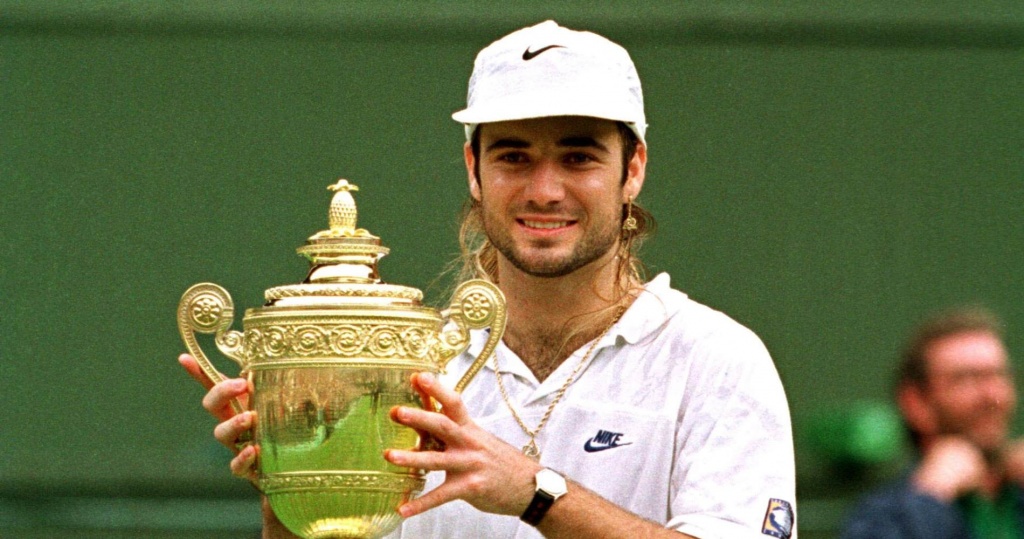
At the end of 1993, Agassi had to undergo surgery after a wrist injury hampered his season. Back on the tour in 1994, he reached the final at Key Biscayne in the spring and later that summer in Toronto, he claimed his first Masters 1000 title in two years, defeating Jason Stoltenberg in the final, 6-4, 6-4. With the last major of the year looming, it was deemed that Andre Agassi was once again a serious contender for the US Open crown.
- Jan Siemerink: the former top 30 pro from Netherlands
Jan Siemerink, born in 1970, was ranked No 113 in the world in August 1994, far away from the 26th position he held in 1991, after having claimed his maiden title in Singapore (defeating Gilad Bloom in the final, 6-4, 6-3). His best Grand Slam performance was a fourth round appearance at the 1991 Australian Open (lost to Goran Prpic, 7-6, 6-7, 6-0, 7-6).
The place: New Haven, Connecticut
The Volvo International Open was founded in 1973. The event moved to several American locations during its run: Bretton Woods, North Conway, and Stratton Mountain. Held every summer on hard courts, a couple of weeks before the US Open, it always attracted great players that were seeking to prepare for the last Grand Slam of the year. In 1990, the Volvo International established itself in New Haven, Connecticut, not far from New York City. Since then, the title had been claimed by champions such as Petr Korda (1991) and Stefan Edberg (1992).
The facts: Agassi loses, then blasts tournament officials
In 1994 at the New Haven Volvo Open, the ATP tour was experimenting with a new way to make the sport more attractive to the general public: blasting music from the loudspeakers during changeovers. One of the first tennis stars to play in these new conditions was Agassi, who faced world No 113 Siemerink in his first match. At the time, the Vegas native was ranked No 18 and having just claimed a Masters 1000 title at the Canadian Open in Toronto, he was the heavy favorite in the encounter.
At first, Agassi tried his best to adjust to the new ATP experiment. He had even selected his intro song (“The way we were”, by Barbra Streisand). Soon though, he showed signs of irritation. His concentration was distrubed, and the distress was soon visible. After a couple of games, Agassi complained to the chair umpire and had the supervisor called on court, only to learn that the music would not be turned off. Miffed about the conditions, and the official rebuttal of his request, the 1992 Wimbledon champion was upset by Siemerink in three sets, 6-3, 3-6, 6-3.
Although he had lost, Andre Agassi’s performance at the Volvo Open was not finished in the least: brutally honest in the press conference, he went on the attack.
“It’s an embarrassment,” Agassi said, according to worldtennismagazine.com. “It’s a joke. If any other tournament does this, I would quit tennis before I would go out there and be a part of that. And that’s no exaggeration. It drove me nuts. (…) It’s a question of what they are doing to the sport. This is a sport. You come out here and you take pride in what you do. If these people aren’t here to watch tennis, they shouldn’t come at all.”
According to The Washington Post, he went on: “I’m not saying they shouldn’t have music because it distracts me, I’m saying we shouldn’t have the music because it isolates people from what they are there for – which is tennis. I really felt people had no sense I was down a break of serve, then I turned the match around. If we’re going to make changes, we need to make changes on what we can do to make people feel more a part of the game, not take them away from it.”
As a conclusion, Agassi fired a last shot at the tournaments’ organisation: “I can’t tell you how disappointed I am that I chose to come here to prepare for the US Open. If I had known they were going to do this, I wouldn’t have come.”
What happened next? The music lingers on
Jan Siemerink would be defeated in the following round by Marc-Kevin Goellner (3-6, 7-6, 6-4). In the years to come, in five encounters, Siemerink would never beat Agassi again.
Andre Agassi would not be the only top player to complain about the music: Boris Becker admitted that he didn’t much care for the experience and added that “the court is not a music hall”.
Despite his early loss in New Haven, Agassi would build on his title in Canada and go on to win the the US Open title in 1994, defeating Michael Stich in the final (6-1 7-6 7-5).
Although it seemed revolutionary at the time, a few years later, playing music during tennis matches, when the players would enter the court as well as during changeovers, would become a part of the show in nearly all tournaments on the tour.



